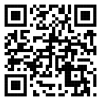Perceived Usefulness, Understandability and Actionability of Feedback Strategies for Digital Ergonomic Risk Assessment in the Prevention of Musculoskeletal Disorders: a pilot study
Aim and Research Question(s)
The primary goal was the identification of strategies to enhance the comprehension of posture improvement advice resulting from automated ergonomic assessment, as conducted via mobile devices. By involving potential users in the process of translating complex data into actionable measures, potential barriers like language limitations, low (health) literacy and poor motivation can be addressed.
- Research Question 1: Which of the tested strategies in the iterative design process proved to be promising?
- Research Question 2: How is the perceived usefulness of the feedback mechanism in the mock-up prototype rated by users?
- Research Question 3: How are the understandability and actionability of the feedback mechanism in the mock-up prototype rated by users?
Background
Musculoskeletal disorders (MSDs) are a major concern in Austria, with an average sick leave duration of 15 days in 2024, causing €272 million in company costs and €350 million for the health and social insurance system [1]. Austrian employers are legally required to assess workplace hazards, often relying on experts and ergonomic tools [2]. However, conventional methods are time-consuming and require expertise, making them less accessible to workers [3]. A key barrier to broader implementation is limited ergonomic health literacy - the ability to access, understand and apply information for safe working practices - which remains low in Austria [4–6]. Accounting for diverse learning types (VARK-model) [7] is essential to ensure inclusivity and practical relevance.
Methods
After an initial literature review with focus on health literacy, learning types, ergonomics and -assessment techniques, different feedback strategies were drafted into low fidelity prototypes. In a user-centered design approach, feedback of potential users was obtained (thinking aloud, smileyometer, ranking scale) and used to inform further design iterations. In the last step, a click-dummy was developed and tested for perceived usefulness (PU questionnaire), understandability and actionability (PEMAT).
Results and Discussion
Early iterations tested diverse feedback modalities. Workers consistently preferred visual side-by-side posture comparisons, supported by optional audio or text. The most effective strategies proved to be multimodal, simple, and layered designs that provide immediate clarity while allowing deeper exploration when needed.
The final prototype was rated positively across all measures: usefulness (PU mean 4.9/7; ↑ task facilitation, work quality, control; ↓ time saving; understandability & actionability PEMAT: 95% / 92%). These findings align with calls for inclusive, worker-centered health communication, but as a pilot with a small sample and click-dummy prototype, broader testing and real-time validation are needed.
clarity while allowing deeper exploration when needed.
The final prototype was rated positively across all measures: usefulness (PU mean 4.9/7; ↑ task facilitation, work quality, control; ↓ time saving; understandability & actionability PEMAT: 95% / 92%). These findings align with calls for inclusive, worker-centered health communication, but as a pilot with a small sample and click-dummy prototype, broader testing and real-time validation are needed.
Conclusion
This pilot study demonstrated the feasibility of a layered, multimodal, user-centered feedback prototype for communicating ergonomic advice to manual workers. Findings suggest that such designs can enhance clarity, inclusivity and practical relevance, providing a foundation for future development, integration in AI tools and larger scale testing.
References
[1] Mayrhuber, Bittschi - Fehlzeitenreport 2024 [2] ArbeitnehmerInnenschutzgesetz (ASchG idgF) [3] Vignais et al 2013 [4] Sorensen et al 2012 [5] Ehmann et al 2021 [6] Griebler et al 2021 - HLS19-AT [7] Vester 1998
